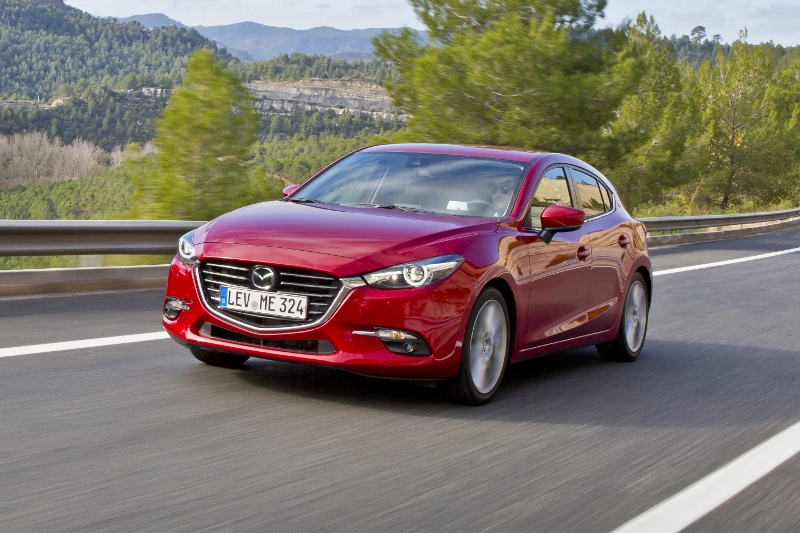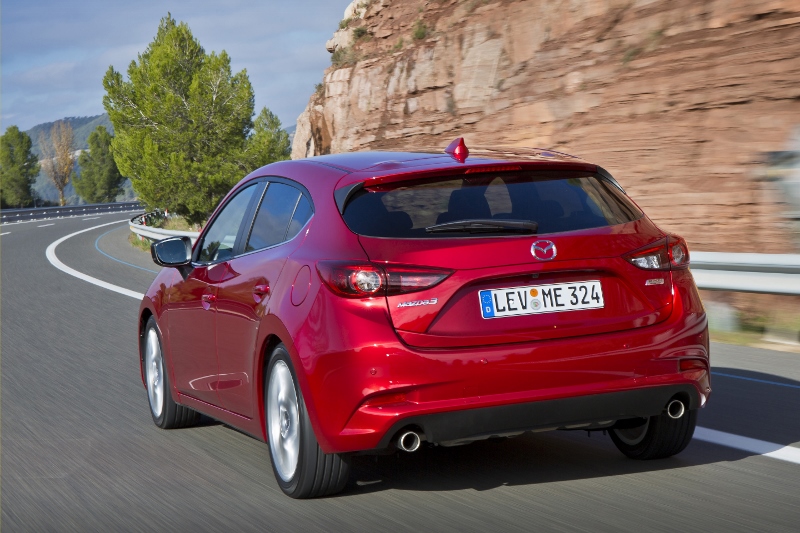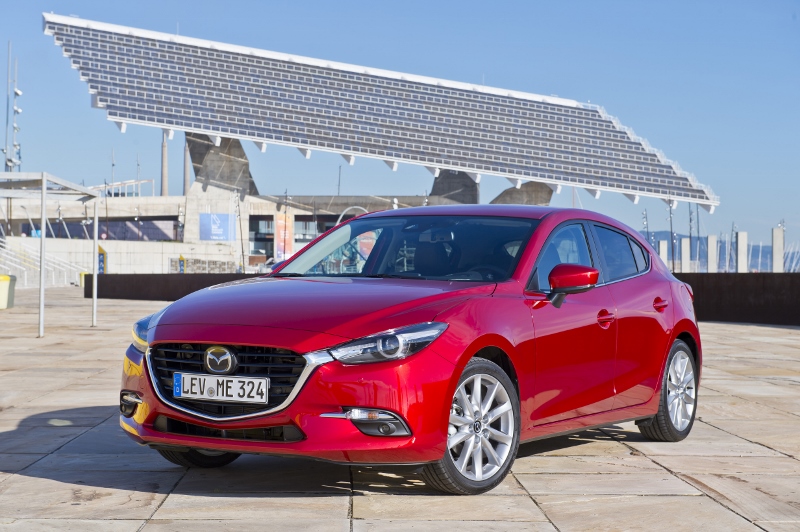First Drive: Mazda3
A good car gets even better, reckons John Kendall.
- Mazda3 (2017)
- Mazda3 (2017)
- Mazda3 (2017)
- Mazda3 (2017)
SECTOR Lower Medium PRICE From €16,450 approx FUEL 3.8-5.6 l/100km CO2 99-129g/km
Although there’s undoubtedly a migration towards fashionable crossovers, the lower-medium segment remains vital to any carmaker operating in Europe. And, for Mazda, a competitive and sufficiently different offering has helped both its retail and fleet sales in this area.
Headlining the changes are some design tweaks – the new nose and frontal treatment bring the Mazda3 into line with other Mazda models, then there are new technology additions and a revised interior. Foremost among the technology upgrades is Skyactiv Vehicle Dynamics, introducing torque vectoring – G-vectoring in Mazda terms.
A revised grille with redesigned fog lamp bezels distinguishes the 2017 model from previous 3s. Door mirrors now incorporate a wraparound indicator repeater lamp and hatchback models get a revised rear bumper. There are new exterior colours too.
Inside, there are a range of changes including an electrical parking brake which frees up more space on the centre console. There’s a new leather trimmed steering wheel too, which when leather trim is specified is also heated.
The engine range is unchanged from before which means there’s a choice of 105hp 1.5-litre (99g/km CO2), or 150hp 2.0-litre diesel (107g/km CO2 manual, 127g/km CO2 automatic), as well as 120hp (119g/km CO2 manual, 129g/km CO2 automatic) and 165hp 2.0-litre (135g/km CO2) petrol engines. Although the engines look similar to the current range, Mazda has introduced a range of modifications. For the diesels this means the introduction of a system Mazda calls Transient Control.
This is said to reduce turbo lag and boosts torque so that power delivery is more like a petrol engine. Diesels also benefit from Mazda’s Natural Sound Smoother, which is said to reduce engine knock noise on starting and during low speed acceleration.
All models benefit from additional noise suppression measures around the cabin, including optimised door seals. Suspension revisions are designed to improve ride comfort and reduce vibrations.
So does it work? In short, yes it does. The Mazda3 was already one of our favourite C-segment models, with high quality finish, good ride and handling and good engines, enhanced by the arrival of the 1.5-litre diesel a year or so ago. Now diesel refinement is improved and the 1.5-litre engine is yet more impressive, thanks to its lively performance, which makes you think that it must be a larger and more powerful engine. It is quite capable of providing entertaining performance on fast A-roads.
The interior revisions are for the better too. There’s an improved instrument display and a better quality impression, not that the previous model provided anything but a high quality interior.
Mazda’s attention to detail with frequent revisions makes it seem as though it really is responsive to feedback on its model range. The company seems determined to keep pushing quality and driveability forwards and that can only be a good thing.
Verdict:
These are tidy improvements to Mazda’s best-seller and help to make a good car better still. A classy C-segment model, the Mazda3 should be on your shortlist.






Leave a comment